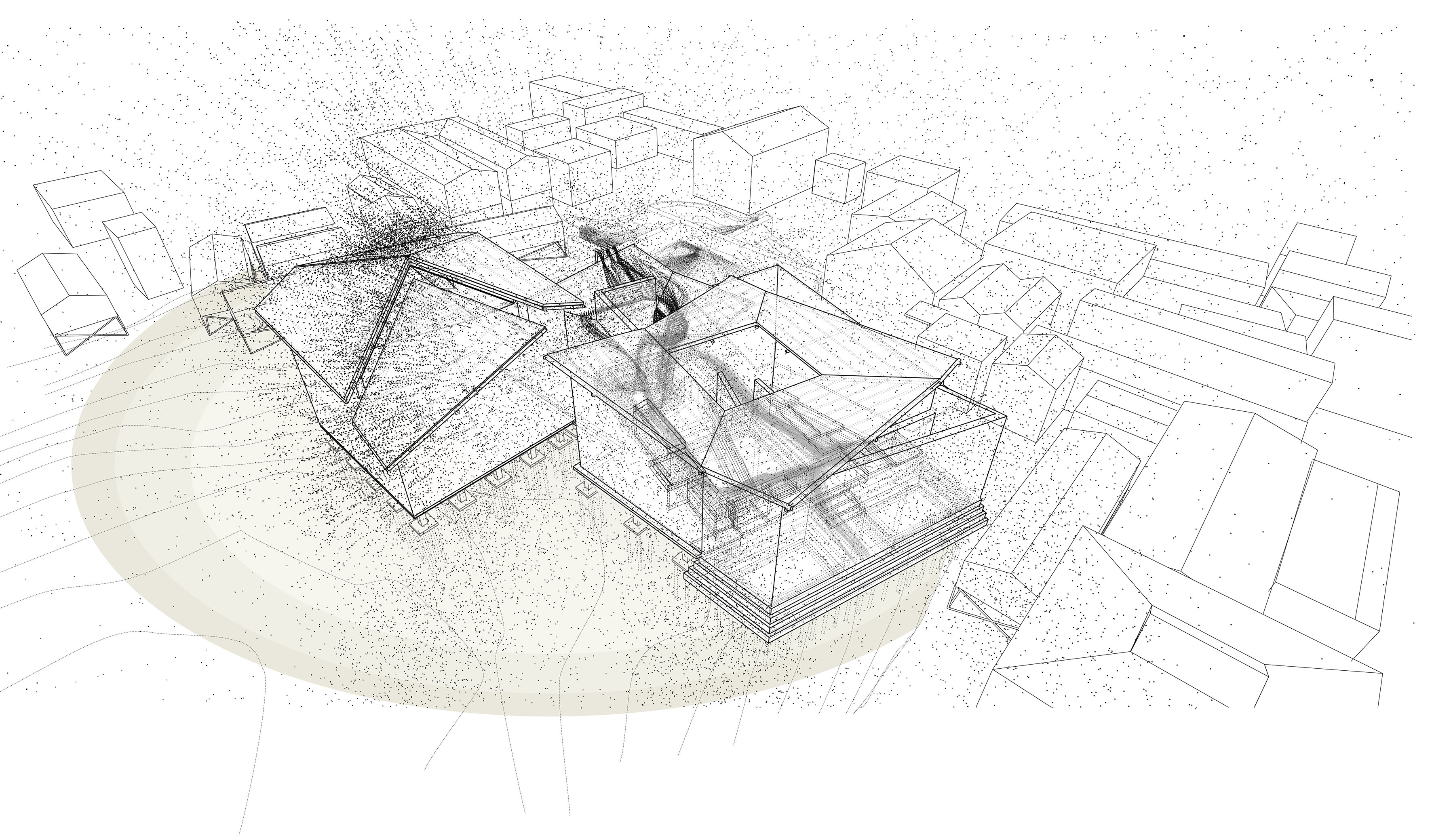DHAKA: DESIGNIN(G) A DELTA (MICRO PUBLIC PLACE)
In the second semester of DS18’s 2017-18 Dhaka studio, students were required to unlock the potential of the prototype designed in the first semester to generate the architecture of a new institution to contribute to public space and life in Bangladesh. The objective of the project was to animate public life and engage the public and the public imaginary in the performance of the prototype through the design of a MicroPublicPlace (MPP) (see Hans Frei and Marc Bohlen. (2010). MicroPublicPlaces. Situated Technologies Pamphlet 6. New York: Architectural League here). The following are examples of the responses to this brief.
Charlotte Birch: The Fluvial Collective
The Fluvial Collective is a community co-operative for three rural poor communities of the Banishanti Union in Bangladesh. Positioned right on the river edge, they are increasingly vulnerable to river erosion exacerbated by illegal sand mining. The sand catcher designed in the first semester is proposed as a prototype to stabilise the river banks and to gather sand for sale in a community owned sand market. This is housed in a building which also performs as a social hub, community and training centre, and where the jute bags used in the sand catcher are manufactured.
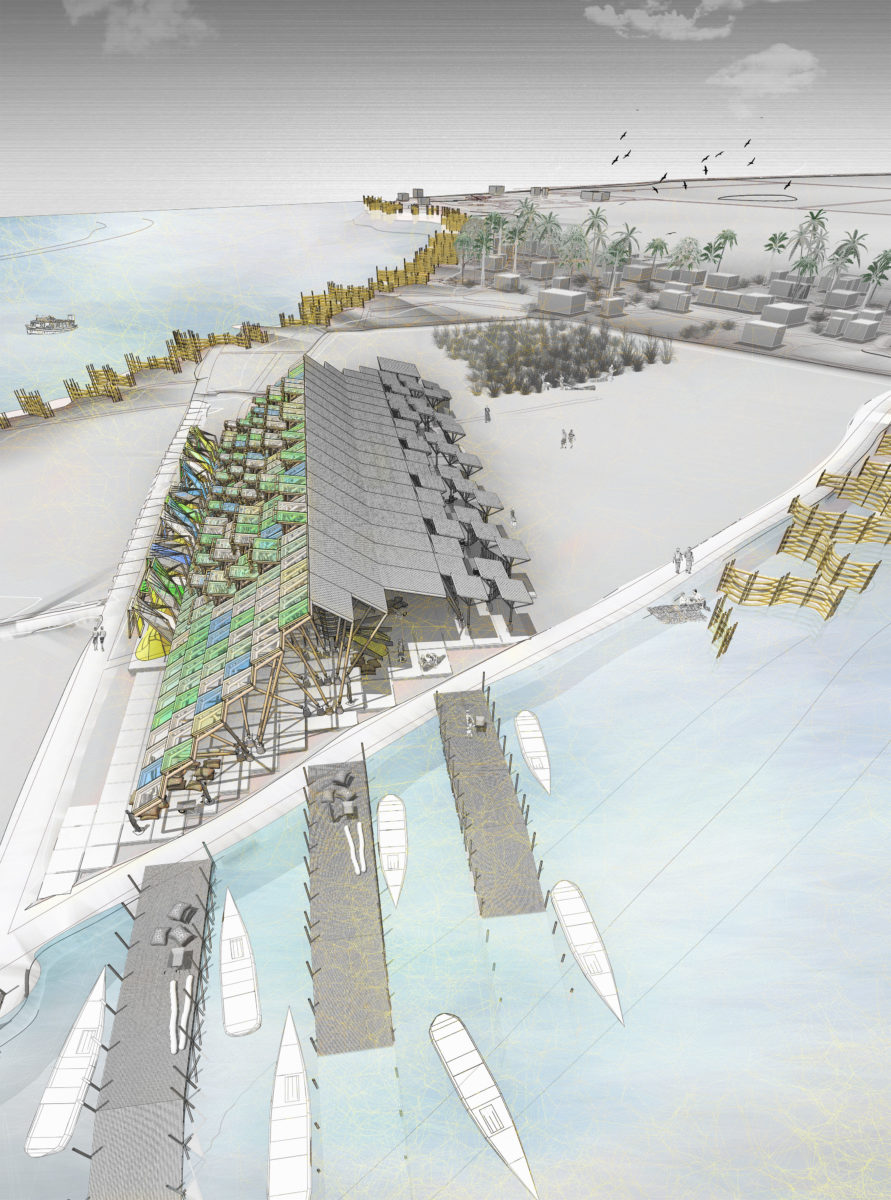
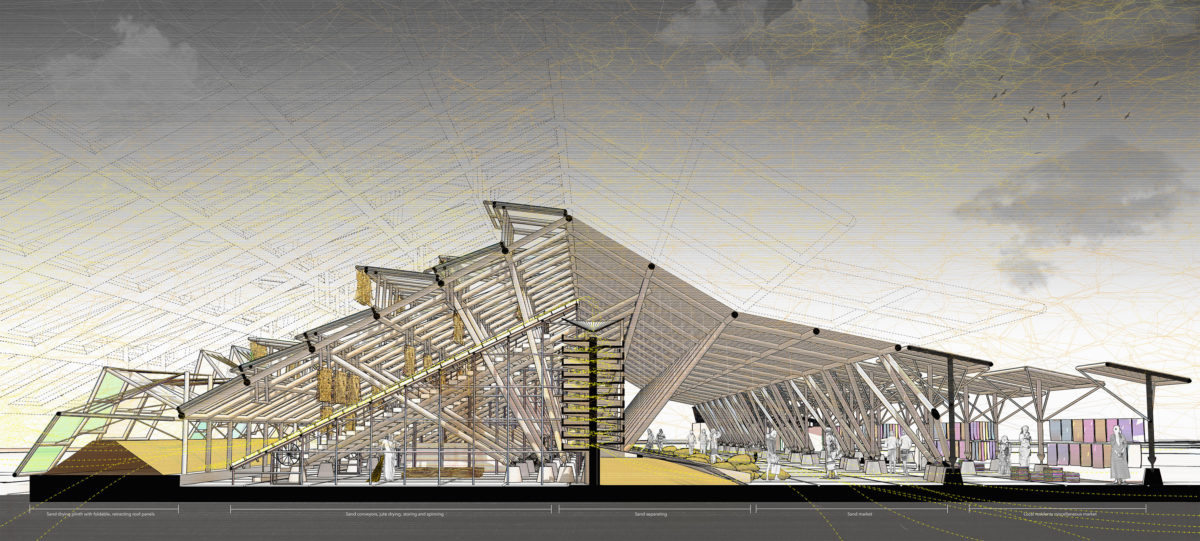
Georgia Trower: Fruit Peel [Epicarp] Exchange
Unreported oil spills are occurring in the delta of Bangladesh, which is having a detrimental effect on the ecosystem. The peel of certain fruits is able to absorb oil and other pollutants, which can then be extracted from them and re-used. The Epicarp Exchange, located in Khulna, houses a co-operative institution giving people access to fuel in exchange for fruit peel. The building houses facilities to collect and dry fruit peel, assemble oil extracting bags, extract oil from them and exchange it for more fruit peel. It is built from recycled ship parts.
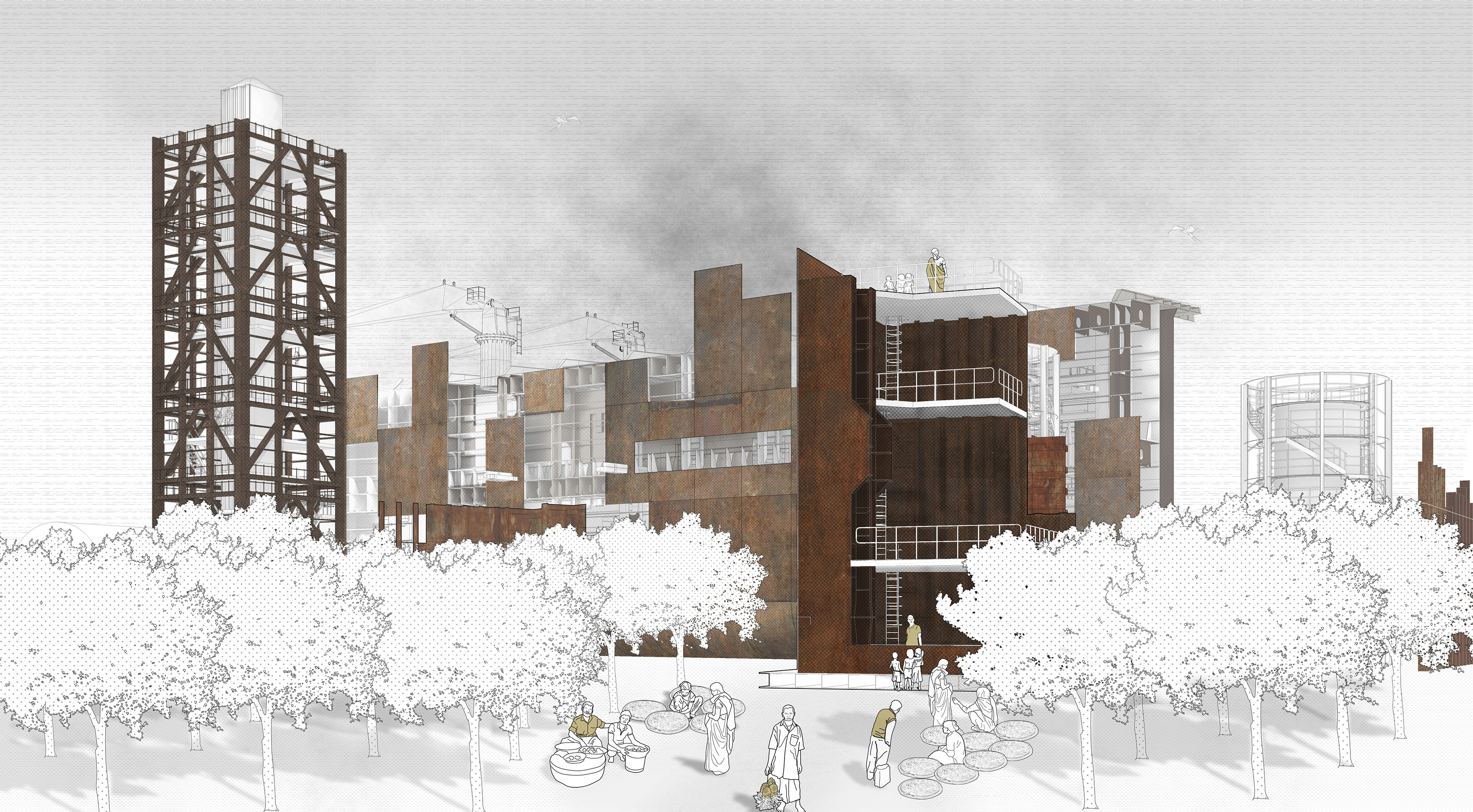
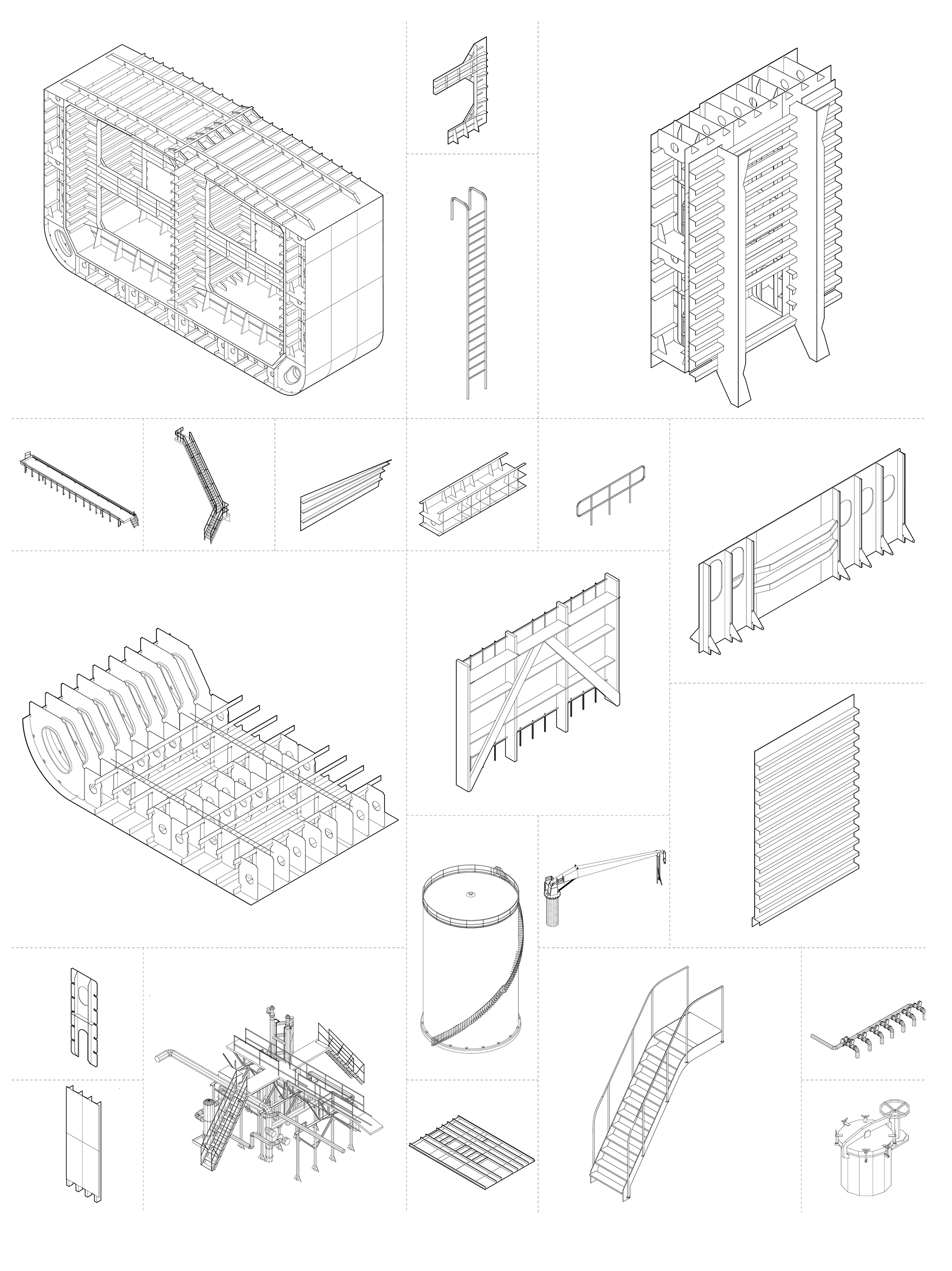
Constantina Avraamides: Arsenic Urban Laboratory
The Arsenic Urban Laboratory is focused around issues of arsenic contamination in Khulna, Bangaldesh. It proposes a system of floating aquaponic farms that are managed by a co-operative of women and a programme of mixed uses where different ways of living with arsenic are tested. These include several remediation processes using plants and bacteria to eliminate arsenic from soil and water, facilities for treating people affected by arsenic contamination, and an information centre where the dangers of arsenic are conveyed and awareness raised about safe drinking water collection methods.
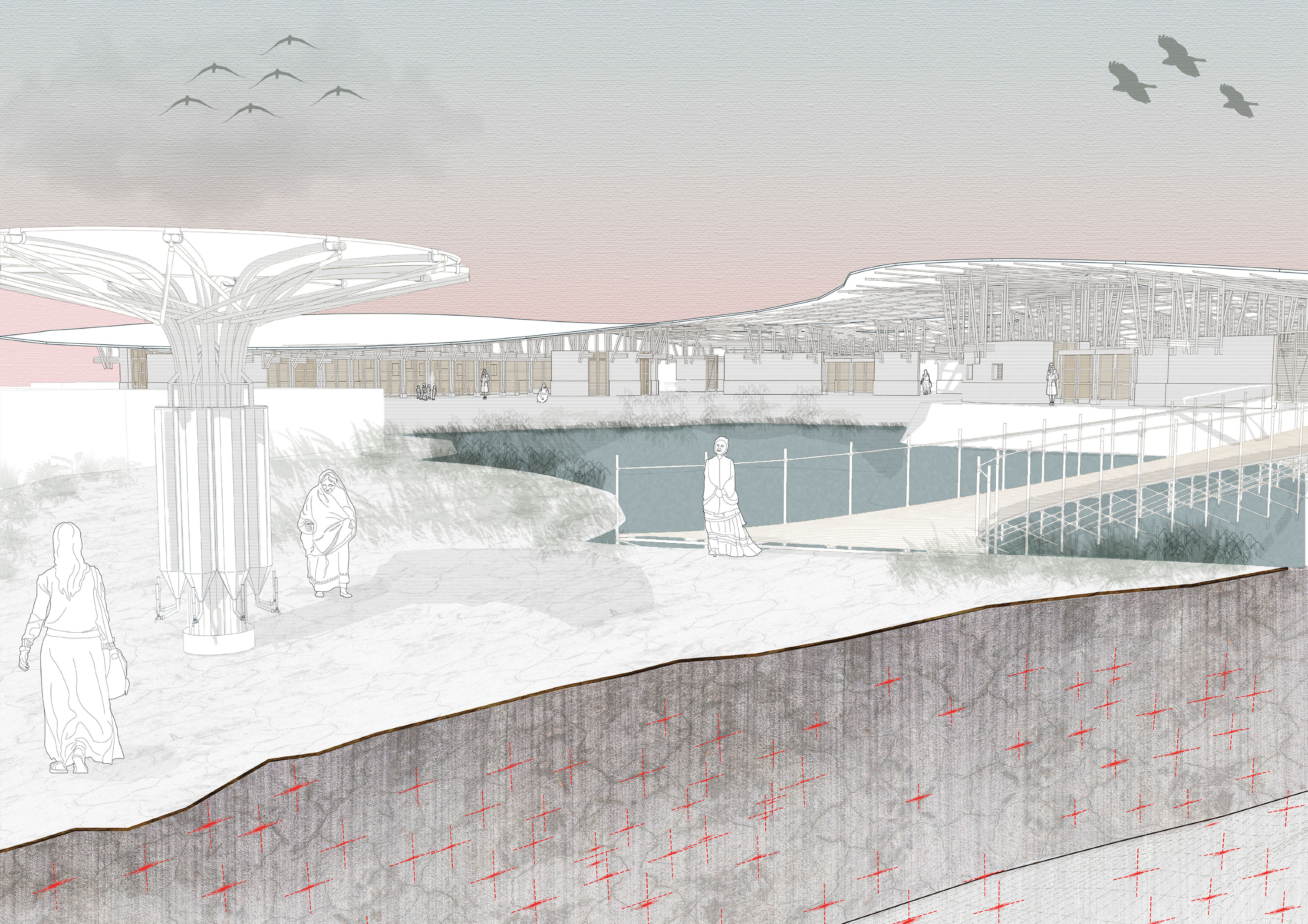
Sarah Bass: Hyacinth Co-operative
The Hyacinth Co-operative is an aquatic system that uses the water hyacinth to restore the rift that exists between agriculture and the Bangladesh river system. The hyacinth factory is one of the components of this co-operative institution. It draws used floating hyacinth farm beds from the river and reabsorbs their nutrients so that they can be converted into fertiliser. The building also acts as a central public interface for the farming community living along the river. It provides them with a space to meet, gather and manage the hyacinth co-operative.
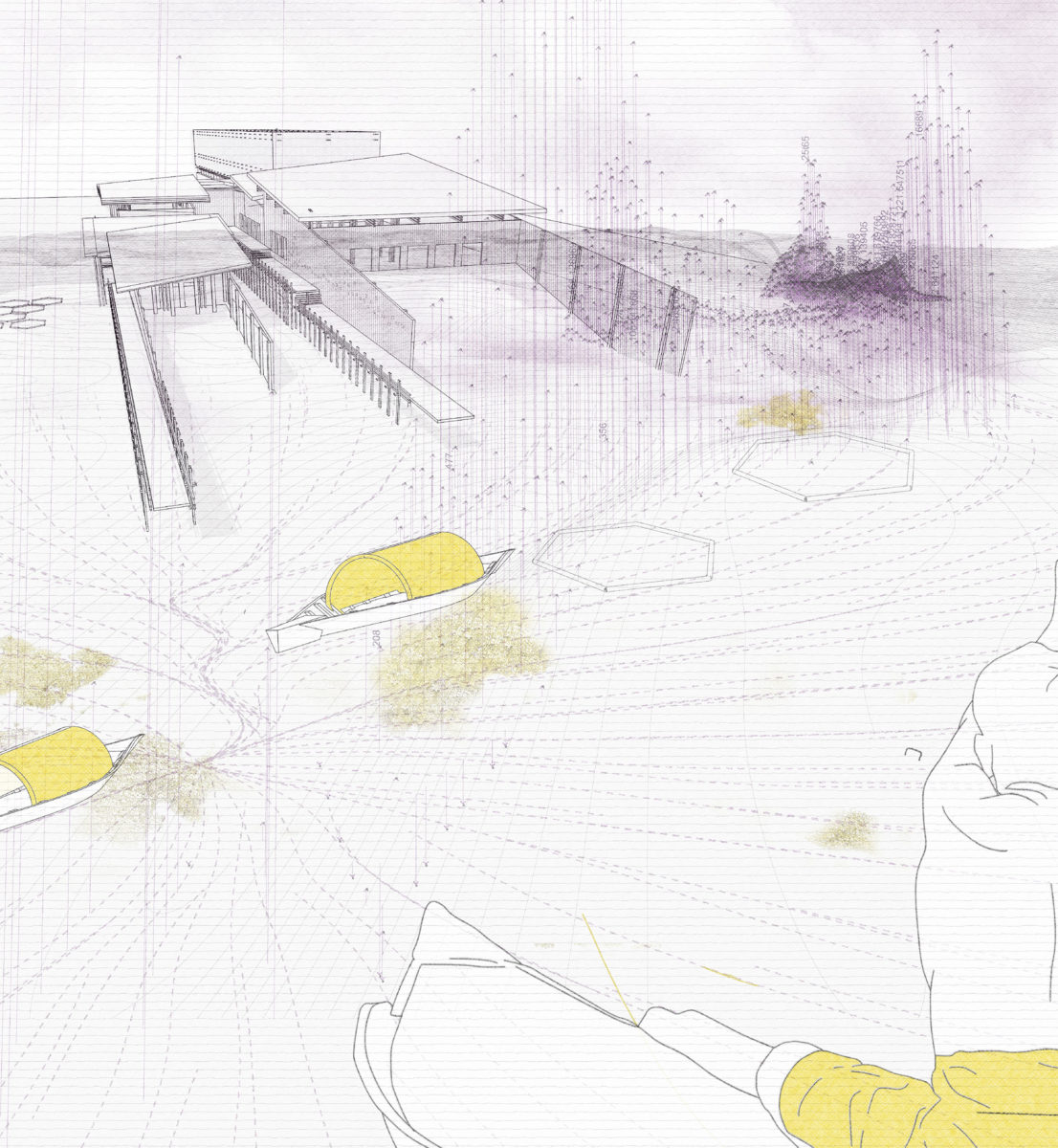
Rosie Rolfe: Char Islanders Refuge
The Char Islanders Refuge is an institution to support those living on char islands in the Upper Meghna River on the outskirts of the Dhaka district. The inhabitants of char islands are amongst the most vulnerable in Bangladesh. The lands they call home disappear in a matter of seconds when the rivers are in flood. The refuge provides market space on the ground floor where char dwellers and others can sell their produce, while the upper floors provide temporary shelter for char dwellers and their animals at times when their land is washed way.
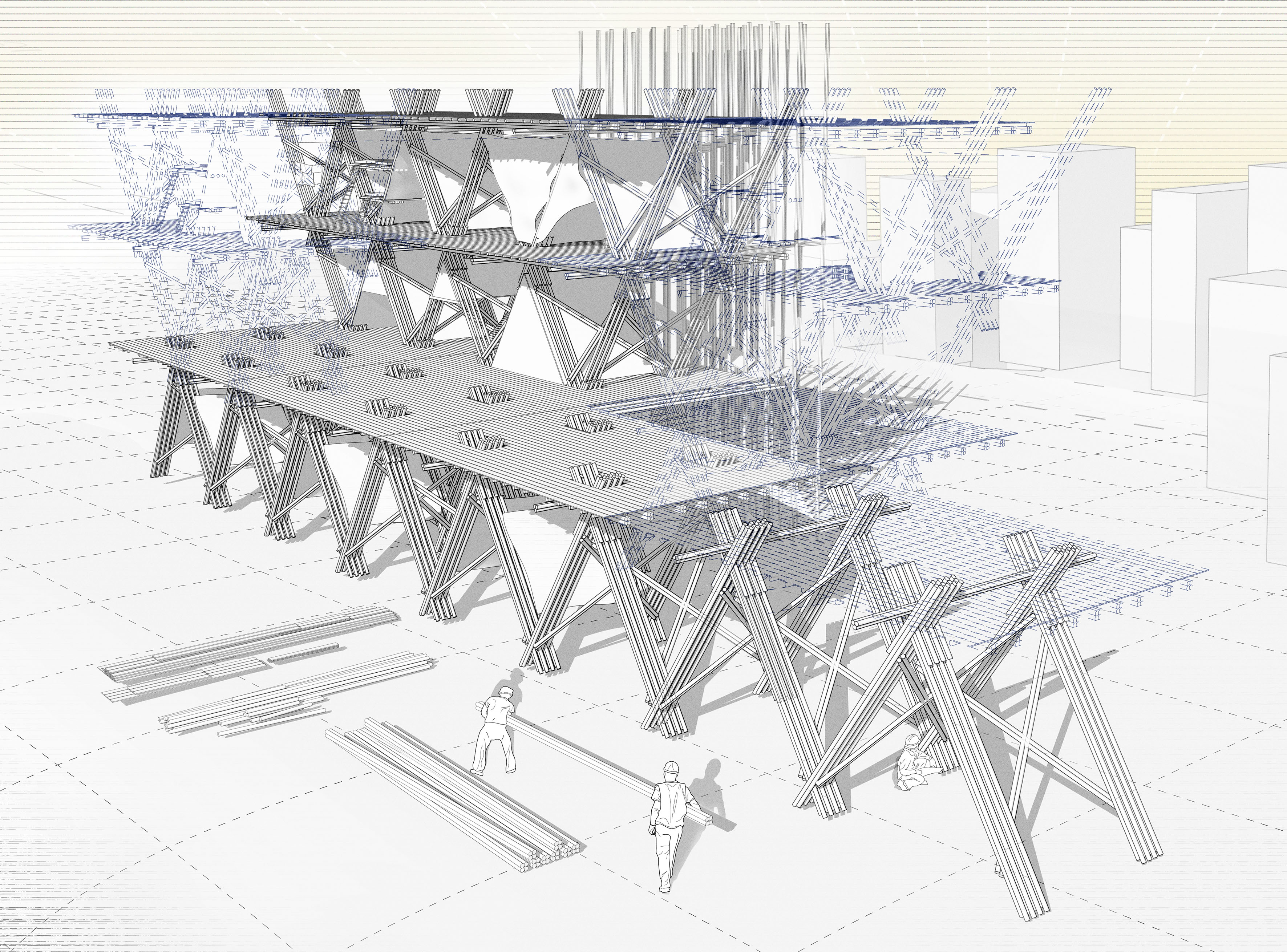

Raymonde Bieler: Resilient Farming: A Womens’ Economy in Saline Water in Mongla Bangladesh
Resilient Farming is a system of floating aquaponic farms and a market that are managed by a co-operative of women. The farms are fed by desalinated water produced by floating desalination pods that move with the tides and the monsoon and track salinity levels. A Women’s Centre, housed in a building on the river bank, teaches farming and leadership skills.
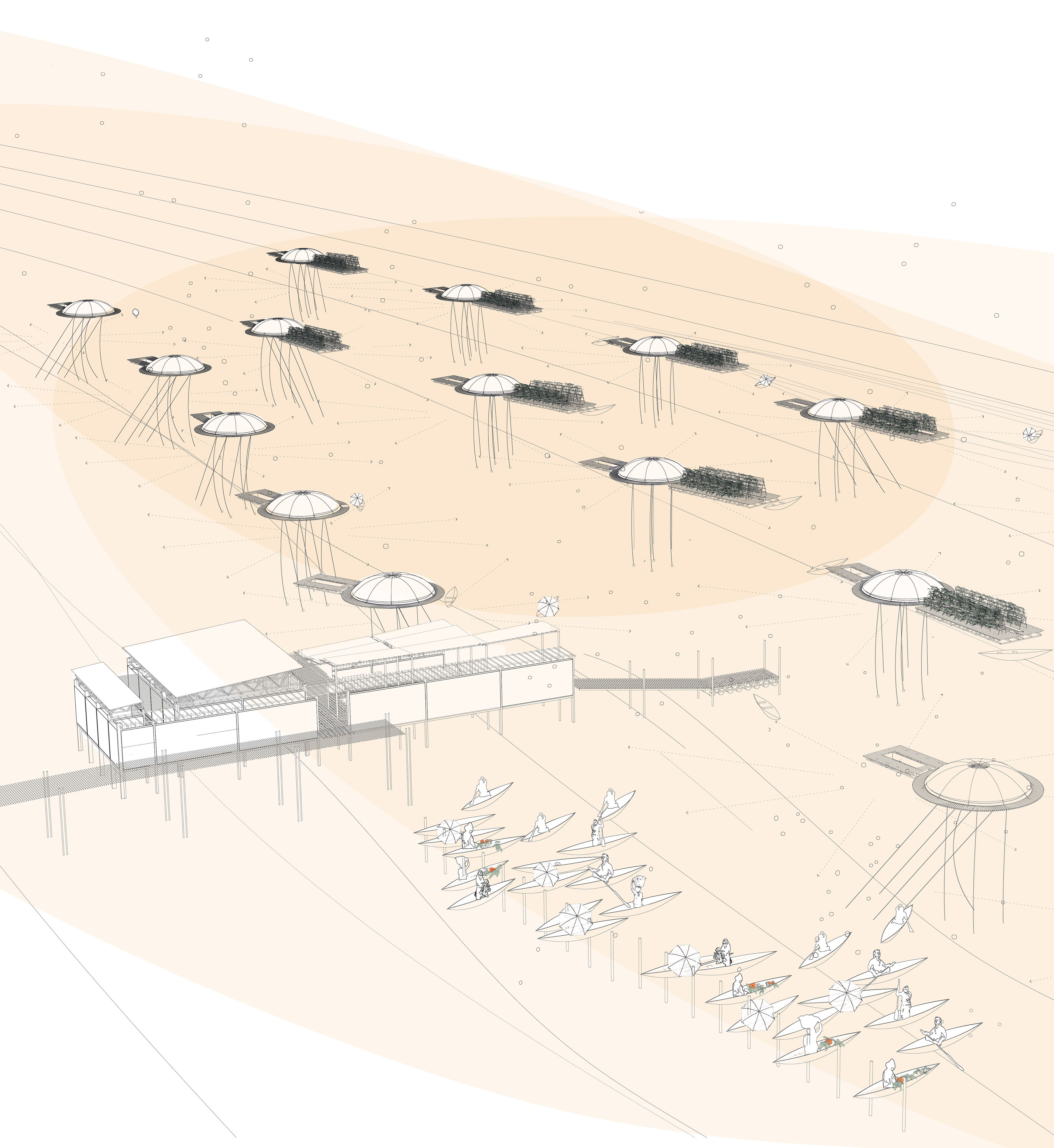
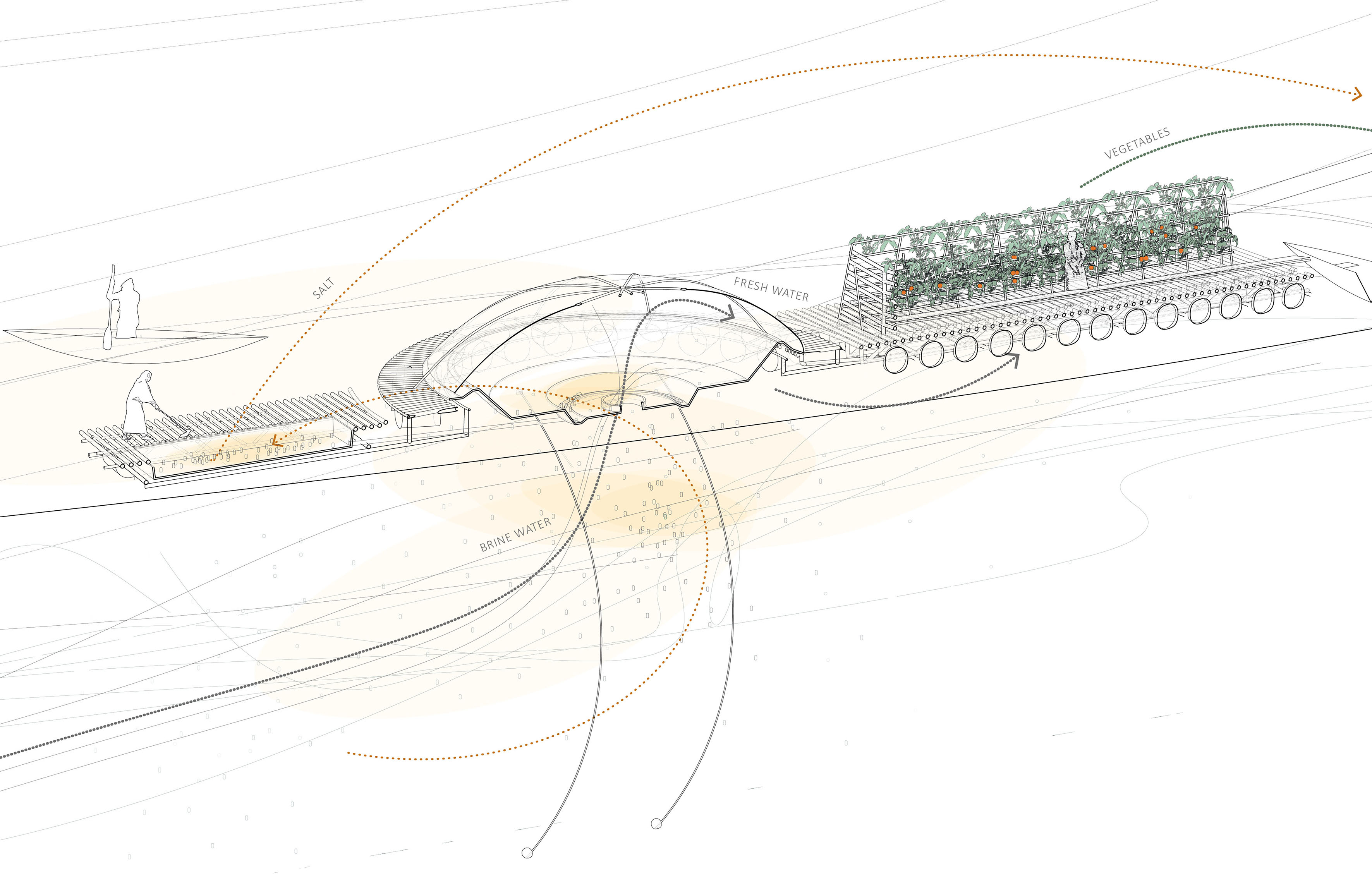
Fiona Grieve: Womens Bathhouse in Korail, Dhaka.
Water-borne disease is one of the biggest causes of mortality in Bangladesh and accounts for nearly 25% of all deaths. This project looks at the alleviation of such diseases through the provision of a clean, safe water source for bathing and washing. It provides a sequence of open spaces along the water’s edge that maintains the tradition of washing in the river, but provides a filtration system to that cleans the water. The building is designed specifically for women, providing a safe sanctuary in which to congregate and socialise.
